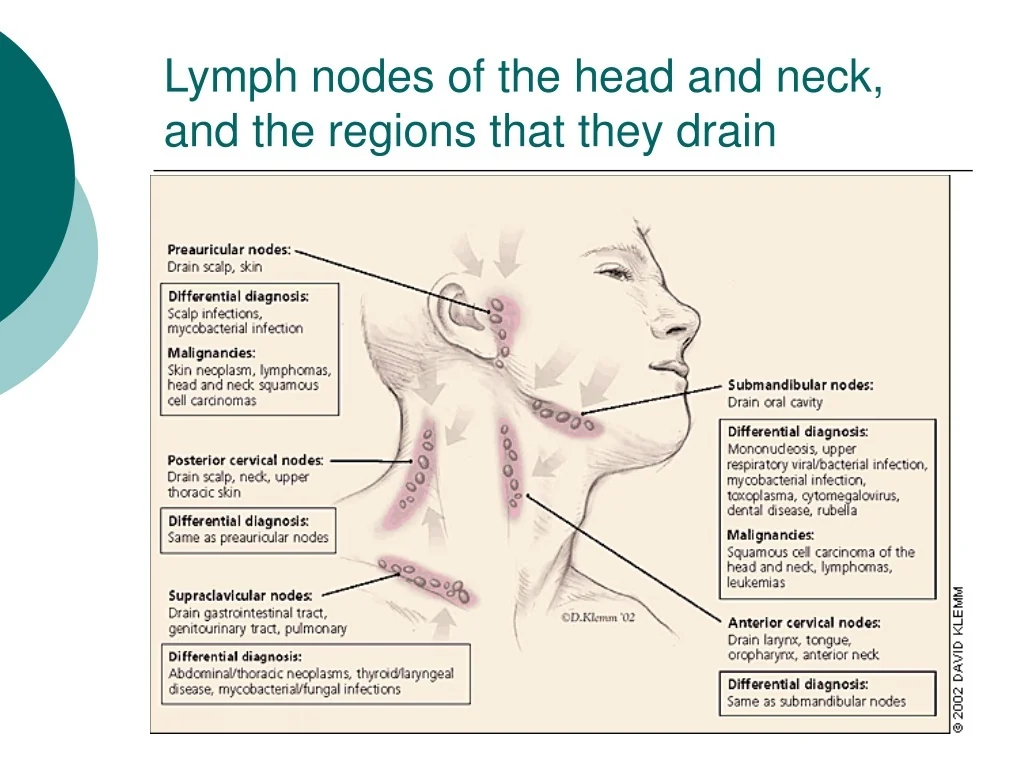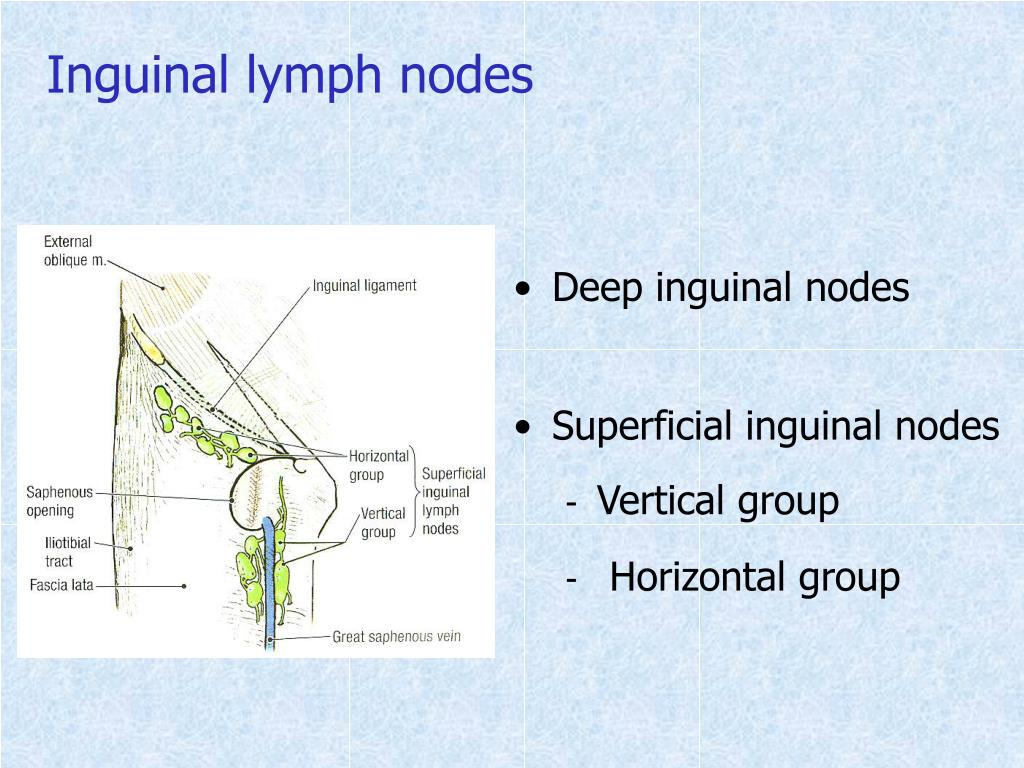Swelling in Lymph Nodes Underarm: Causes, Symptoms, and Treatment
What causes swollen lymph nodes in the armpit? What are the symptoms? How is it treated? Get the answers to these questions and more.
What are Lymph Nodes and Why Do They Swell?
Lymph nodes are part of the body’s immune system. They act as filters, trapping bacteria, viruses, and other unwanted substances that may be circulating in the lymphatic fluid. When the lymph nodes detect an infection or injury, they may swell as they work harder to remove these harmful elements from the body.
Swollen lymph nodes are often found in the neck, armpits, and groin, as these are areas where lymph nodes are concentrated. A swollen lymph node may be painful, tender, and visibly enlarged under the skin. In some cases, the swelling may be deeper within the body and only detected through touch.
Common Causes of Swollen Lymph Nodes in the Armpit
Viral Infections
Many common viral infections can cause the lymph nodes to swell, including:
- Chickenpox (varicella-zoster virus)
- Measles
- Mumps
- Rubella
- HIV
These viral infections usually produce other symptoms like rashes, fever, and fatigue in addition to the swollen lymph nodes.

Influenza (Flu)
The flu is a respiratory viral infection that can also lead to swollen lymph nodes. Flu symptoms tend to develop suddenly and include fatigue, sore throat, cough, runny nose, body aches, headaches, and fever or chills.
Infectious Mononucleosis
Also known as “mono” or “glandular fever,” infectious mononucleosis is caused by a viral infection that can make the lymph nodes in the neck and armpits swell. Other symptoms include extreme fatigue, fever, swollen liver or spleen, and a sore throat.
Bacterial Infections
Bacterial infections can also cause lymph nodes to swell, such as:
- Cellulitis (skin infection)
- Lyme disease (tick-borne infection)
- Chlamydia
- Syphilis
- Tuberculosis
Symptoms may include pain, redness, warmth, and fluid buildup at the site of the infection, as well as fever, chills, and body aches.
When to See a Doctor
Most swollen lymph nodes are caused by minor infections that will resolve on their own. However, it’s important to see a doctor if the swelling persists for more than a couple of weeks or is accompanied by other worrying symptoms like fever, unexplained weight loss, or difficulty swallowing.

Diagnosis and Treatment
To diagnose the cause of swollen lymph nodes, a doctor may perform a physical exam, order imaging tests, and potentially conduct a biopsy. Treatment will depend on the underlying cause, but may include antibiotics, antiviral medications, or other therapies. In some cases, the lymph node may need to be surgically removed.
Preventing Swollen Lymph Nodes
While you can’t always prevent swollen lymph nodes, there are some steps you can take to reduce your risk:
- Practice good hygiene by washing your hands regularly
- Get recommended vaccinations, like the annual flu shot
- Avoid tick bites that can spread infections like Lyme disease
- Treat any cuts, scrapes, or other skin infections promptly
Paying attention to your body and seeking medical care when needed can also help ensure any swollen lymph nodes are properly evaluated and treated.
FAQs
Why do lymph nodes swell?
Lymph nodes swell as part of the body’s immune response to fight off infections or other threats. The swelling indicates the lymph nodes are working harder to filter out and remove harmful substances from the lymphatic fluid.

What causes swollen lymph nodes in the armpit?
Common causes of swollen lymph nodes in the armpit include viral infections like the flu or mono, bacterial infections like cellulitis or Lyme disease, and even some types of cancer. The swelling is a sign the lymph nodes are responding to an infection or other condition.
When should I see a doctor about swollen lymph nodes?
You should see a doctor if the lymph node swelling persists for more than a couple of weeks or is accompanied by other symptoms like fever, unexplained weight loss, or difficulty swallowing. Prompt medical attention can help identify and treat the underlying cause.
How are swollen lymph nodes treated?
Treatment for swollen lymph nodes depends on the cause. For minor infections, treatment may involve rest, fluids, and over-the-counter pain relievers. More serious conditions may require antibiotics, antiviral medications, or even surgery to remove the swollen lymph node.
Swollen lymph nodes in armpit: Symptoms, causes, and treatment
Lymph nodes are part of the body’s immune system. A swollen lymph node in the armpit may be a sign of a bacterial or viral infection, an injury, or a serious health condition, such as cancer.
The possible causes of lymph node swelling range in severity from common infections that typically resolve on their own to more serious conditions, such as lymphoma.
In this article, we look at why lymph nodes swell, the most common causes of this symptom, and when to consult a doctor.
When a person has an infection or injury, the lymph nodes may swell as they start to filter unwanted cells from the lymph.
Lymph is a watery fluid that carries oxygen to the cells and transports waste products away from them. It also contains white blood cells, which help fight infections.
As the lymph nodes begin to work harder to remove waste, they can enlarge. This enlargement is more common in certain areas of the body, including the neck, armpits, and groin.
A swollen lymph node may be painful and tender to the touch. In some cases, it will be visibly enlarged under the skin, but in others, it will be smaller or deeper in the body and only apparent when touching the area.
Many viruses can cause swollen lymph nodes. These include:
- varicella-zoster virus, which causes chickenpox
- measles
- mumps
- rubella
- HIV
Infections with these viruses usually produce other visible symptoms, such as a rash.
However, other viral conditions can cause swollen lymph nodes with no other visible symptoms. These include:
Influenza (flu)
The flu is a respiratory infection that can also cause the lymph nodes to swell. The symptoms of the flu are similar to those of other respiratory viruses, but they tend to be more severe. They also often develop suddenly rather than gradually.
Other symptoms of the flu include:
- fatigue
- sore throat
- a cough
- runny or stuffy nose
- body aches
- headaches
- fever or chills
Vomiting and diarrhea can also occur, but these symptoms are more common in children.
While a person has the flu, they should stay at home and rest, avoiding contact with others. Most people recover from the flu without treatment, but it can sometimes cause complications.
People who are most at risk of complications include:
- young children
- adults over 65 years of age
- pregnant people
- people with underlying health conditions
People in these groups may need antiviral medication to prevent severe symptoms. Getting a flu vaccine each year is the best way to avoid getting the flu.
Infectious mononucleosis
Infectious mononucleosis, also known as mono or glandular fever, is the result of a viral infection. It can cause lymph nodes in the neck and armpits to swell. Mono also causes symptoms such as:
- extreme fatigue
- fever
- swelling in the liver, spleen, or both
- sore throat
- body aches
- headaches
Mono will eventually go away on its own. Most people recover in 2–4 weeks, but some experience symptoms for longer.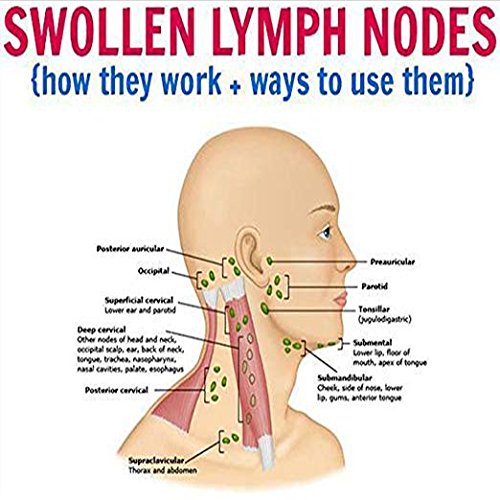 Resting, drinking fluids, and taking over-the-counter (OTC) pain relievers can help during recovery.
Resting, drinking fluids, and taking over-the-counter (OTC) pain relievers can help during recovery.
Bacterial infections can also cause the lymph nodes to swell. Some examples of infections that could affect the nodes in the armpit include:
Cellulitis
Cellulitis is a skin infection. It occurs when bacteria penetrate the skin and infect the deeper layers, potentially as a result of an injury that led to an area of broken skin.
Cellulitis may cause nearby lymph nodes to swell. For example, an infection in the arm may cause the lymph nodes in the armpit to enlarge. Common symptoms of cellulitis at the infection site include:
- pain and swelling
- skin sores
- skin that is warm to the touch
- redness, which may be less apparent in people with dark skin tones
- hardening of the skin
- fluid collection under the skin
Additional symptoms of cellulitis may include:
- fever or chills
- body aches
- muscle and joint pain
- vomiting and nausea
- fatigue
Doctors treat cellulitis with antibiotics. A person may need to stay in the hospital if the infection is severe or they require IV antibiotics, which a doctor administers directly into a vein.
A person may need to stay in the hospital if the infection is severe or they require IV antibiotics, which a doctor administers directly into a vein.
Lyme disease
Lyme disease spreads via the saliva of certain species of tick, which are small insects that can bite humans. One of the early symptoms of Lyme disease is swollen lymph nodes, which may appear 3–30 days after the tick bite occurred.
Other early symptoms include:
- a circular rash resembling a bull’s-eye at the site of the bite
- fever
- chills
- joint or muscle aches
- fatigue
- headaches
A doctor will typically prescribe antibiotics to treat Lyme disease. Anyone who suspects that they have this condition should seek medical attention promptly.
Other bacterial infections that can cause swollen lymph nodes include:
- chlamydia
- syphilis
- tuberculosis
However, these infections typically affect the lymph nodes in other areas of the body, such as the neck or groin. They are less likely to cause swelling in the armpits.
They are less likely to cause swelling in the armpits.
Bacteria and viruses are not always responsible for swollen lymph nodes in the armpit. Other possible causes include:
Rheumatoid arthritis
Rheumatoid arthritis (RA) is one of several autoimmune conditions that can cause swollen lymph nodes.
RA occurs when the body’s immune system mistakenly attacks the lining of the joints, causing stiffness, pain, and warmth.
A 2019 review article states that RA affects the lymph nodes, reducing their capacity to drain fluid from nearby inflamed joints. This impairment may lead to local lymph node enlargement.
Doctors treat RA with medications that reduce inflammation and relieve pain. Physical therapy may also help. In some cases, a doctor may recommend surgery to replace or repair affected joints.
Cancer
In some cases, swollen lymph nodes are a symptom of cancer.
Cancer that begins in the lymphatic system is known as lymphoma. There are several types of lymphoma, including:
- Hodgkin lymphoma
- non-Hodgkin lymphoma
- non-Hodgkin lymphoma in children
- Waldenström macroglobulinemia
- lymphoma of the skin
In addition to swollen lymph nodes, the symptoms of lymphoma can include:
- unintentional weight loss
- feeling tired
- fever
- night sweats
Other types of cancer that have spread to the lymph nodes, such as breast cancer, can also cause swelling in these parts of the body.
The type and stage of the cancer, as well as a person’s age and overall health, will affect what treatment doctors recommend.
However, it is worth remembering that there are many causes of swollen lymph nodes that are not related to cancer.
A doctor can determine the cause of swollen lymph nodes in the armpit and recommend the best treatment. They may ask about the person’s symptoms, review their medical history, and perform a physical examination.
In some cases, a doctor may also carry out diagnostic tests, such as blood tests, a biopsy, or medical imaging.
In most cases, the swelling in lymph nodes under the armpit will resolve within 1–2 weeks.
If the swelling lasts for longer or worsens over time, a person should speak with a doctor.
Swollen lymph nodes can be painful. While a person receives medical treatment, they can also try certain techniques at home to ease any tenderness.
For instance, a person can apply a warm compress to reduce pain. They can run warm or hot water over a washcloth and wring it mostly dry before placing it on the swollen lymph node.
They can run warm or hot water over a washcloth and wring it mostly dry before placing it on the swollen lymph node.
People can also take OTC pain medications, such as acetaminophen or ibuprofen, to relieve pain. A person should talk with their doctor if they are not sure what medications are best for them.
Anyone with swollen lymph nodes in their armpit should talk with a doctor. Swollen lymph nodes have many potential causes, and a doctor can rule out possibilities that require prompt treatment, such as Lyme disease.
Although swollen lymph nodes often result from an infection, it is important for a person to schedule an appointment if:
- the swelling continues for more than 2 weeks or worsens after this time
- the lump feels hard or does not move when a person touches it
- there is swelling in lymph nodes in more than one area — for example, in both the neck and armpits
- the swollen lymph nodes are not painful
- there are other symptoms, such as fever, night sweats, or unexplained weight loss
A person should also consult their doctor about swollen lymph nodes if they have previously had cancer treatment.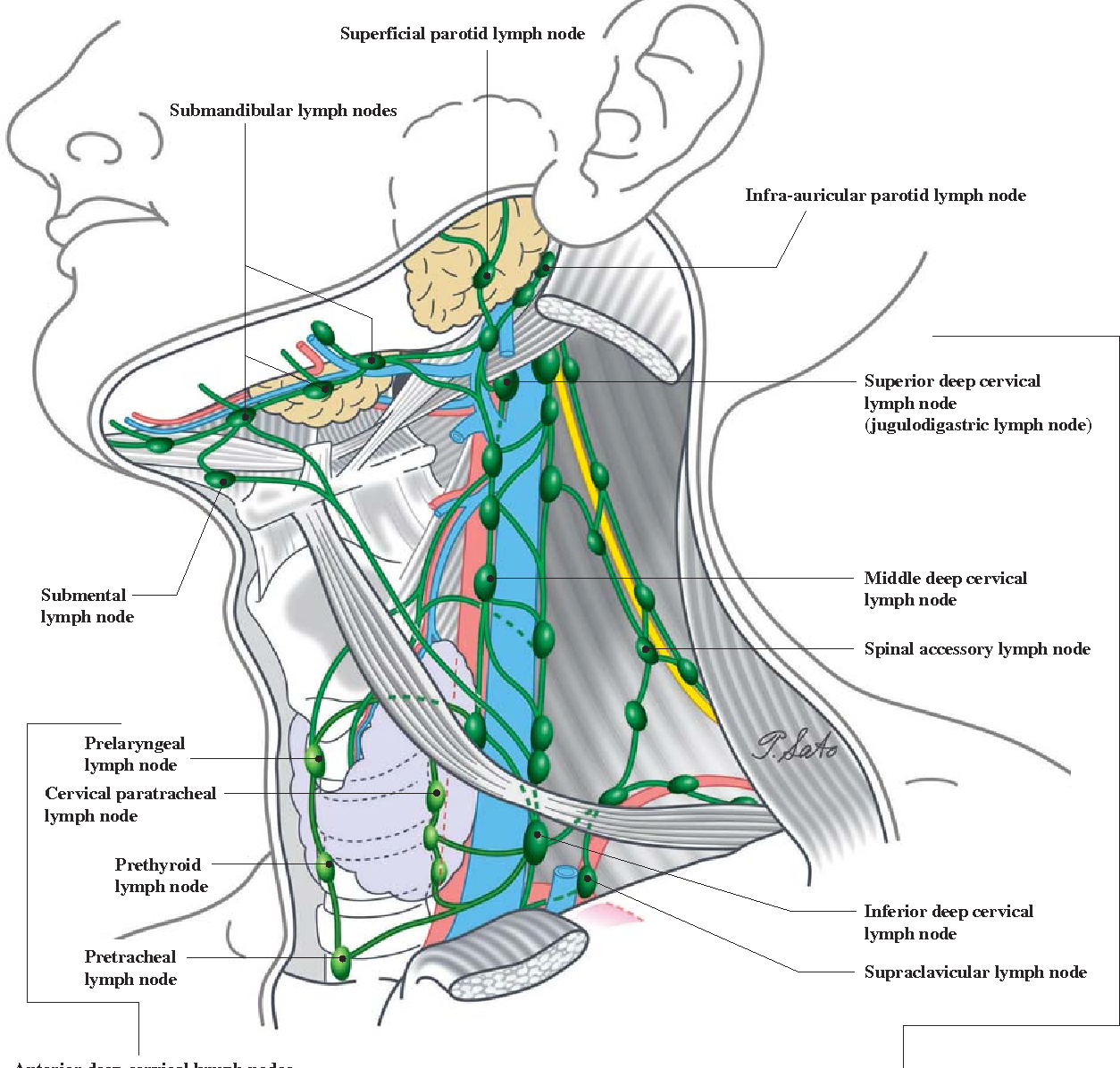
Swollen lymph nodes in the armpit can be a sign of common viral infections, such as the flu or mono. They can also occur as a result of a bacterial infection or RA. In some cases, swollen lymph nodes are a symptom of cancer.
Warm compresses and OTC pain medication can ease any pain or tenderness. However, a person should talk with a doctor if they have swollen lymph nodes with no clear cause.
Swollen Lymph Nodes in the Armpit: Pictures, Treatments, & More
Swollen lymph nodes in the armpit may indicate an infection, injury, or disease that requires medical attention. However, it’s usually not a sign of cancer.
Read on to learn what it means to have swollen lymph nodes in your armpit.
Lymph nodes are critical parts of the immune system. They filter foreign substances from the body and store white blood cells called lymphocytes. Lymphocytes fight disease and infections.
You have hundreds of small bean-shaped lymph nodes throughout the body, including in your:
- neck
- armpit
- chest
- abdomen
- groin
A lymph node in the armpit that’s only slightly enlarged may be difficult to see, but you may be able to feel it with your fingers. A serious infection or other condition may cause one or more nodes to swell enough that you can see a lump under your skin.
A serious infection or other condition may cause one or more nodes to swell enough that you can see a lump under your skin.
Keep in mind that the armpit contains many nodes, so swelling could occur in the front, center, or back of the armpit, as well as along part of the upper arm near the armpit.
In addition to being swollen, an affected lymph node may also be sore or tender to the touch.
Share on PinterestCT scan showing swollen lymph nodes in armpit.
Ahn, R. W., Mootz, A. R., Brewington, C. C., & Abbara, S.
Share on PinterestSwollen lymph nodes in the armpit due to infection.
Casa nayafana/Shuuterstock
Share on PinterestEnlarged lymph nodes in the armpit due to tuberculosis.
Zay Nyi Nyi/Shutterstock
To check for a swollen lymph node in the armpit, lift your arm slightly and gently place your fingers into your armpit. Press your fingers against the center of the armpit and then around the front and back of the armpit along the chest wall. Do the same on the other side.
Do the same on the other side.
Lymph nodes exist in pairs on each side of the body, and typically only one node in a pair will be swollen. By comparing both sides, it may be a little easier to tell if one is enlarged.
If lymph nodes are swollen in more than one part of the body, the condition is known as generalized lymphadenopathy, which suggests a systemic illness. Localized lymphadenopathy refers to swollen lymph node(s) in one location.
The location of swollen lymph nodes usually suggests the cause of the problem. A swollen lymph node in the neck, for example, is often a sign of an upper respiratory infection.
When lymph nodes in the armpit become swollen, your body may be fighting a viral infection, or any of several other conditions. The potential causes of a swollen lymph node in the armpit can include:
Viral infection
Common viruses can trigger swelling in one or more lymph nodes in the armpit. They can include:
- flu
- common cold
- mononucleosis
More serious viral infections that may cause lymph node enlargement include herpes, rubella, and HIV.
These viruses may also cause lymph nodes in the neck to become enlarged, too. In many cases, rest, fluids, and time are all that you can do while your immune system fights off the virus. For certain viral infections, like HIV, antiviral medications may be necessary.
Bacterial infection
Some common bacterial infections on the arm or surrounding chest wall, including staphylococcus and streptococcus, can lead to an enlarged lymph node in the armpit and elsewhere in the body. Antibiotics and rest are usually enough to overcome a bacterial infection.
Immune system disorder
Flare-ups of autoimmune disorders, like lupus and rheumatoid arthritis, can cause temporary enlargement of the lymph nodes in an armpit. Treatments vary, depending on the cause, but anti-inflammatory medications, pain relievers, and in serious cases, immunosuppressant drugs may be necessary.
Cancer
Certain types of cancer directly involve the lymphatic system.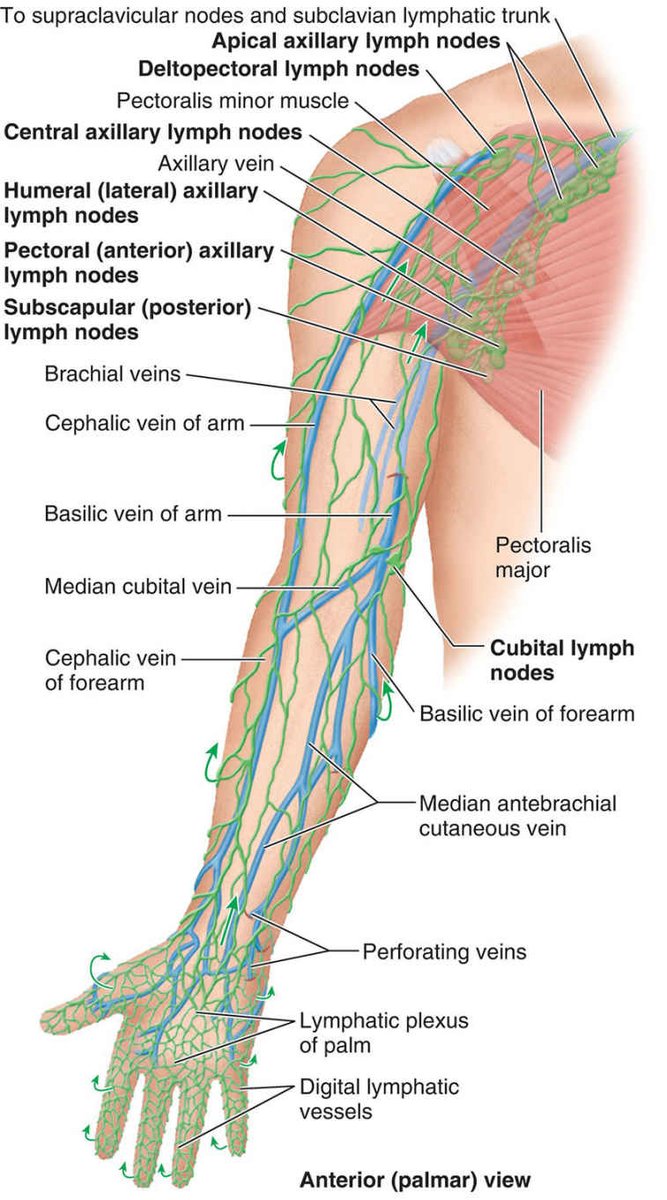 Lymphoma actually originates in the lymph glands. Leukemia, a cancer of the blood cells, can cause inflammation and swelling of the lymph nodes.
Lymphoma actually originates in the lymph glands. Leukemia, a cancer of the blood cells, can cause inflammation and swelling of the lymph nodes.
Cancers that form in other organs or tissue may spread to the lymphatic system. Breast cancer, for example, can cause swelling of the lymph nodes in the armpit.
An enlarged lymph node near a cancerous tumor is often suspected of also being cancerous. Cancer treatments vary and may include chemotherapy, radiation therapy, surgery, and other approaches.
Medications
In rare cases, certain medications can cause lymph nodes to swell. Among them are:
- ACE inhibitors, beta blockers, and vasodilators to treat high blood pressure
- anticonvulsant drugs, including phenytoin and primidone
- anti-malarial drugs, including quinidine
- uric acid reducers, like allopurinol
Switching medications or adjusting doses may be enough to reduce side effects like lymph node enlargement.
As your body starts to successfully fight off the infection, the swelling in your lymph nodes should start to diminish./armpitpainfinal-01-5c86a51446e0fb000133653f.png)
With a typical bacterial infection, for example, a course of antibiotics should start to relieve lymph node swelling and other symptoms within a few days. A stubborn viral infection could take longer.
If your other symptoms are subsiding, but your lymph nodes remain swollen, tell a health professional. You may need additional treatment or a follow-up exam to see if there are other reasons your lymph nodes are still enlarged.
Because swollen lymph nodes are more often signs of an infection, rather than cancer, you may be inclined to dismiss swelling as a temporary symptom that’ll subside as you get over your infection. In many cases, that’s exactly what will happen.
If you’re unsure whether to seek a medical evaluation for swollen lymph nodes, these signs may be reasons to see a medical professional:
- One or more lymph nodes are swollen for no obvious reason.
- The swelling has lasted or gotten worse over a period of 2 or more weeks.
- The affected node feels hard and immovable when you press on it.

- The swollen lymph nodes aren’t painful.
- You have swollen lymph nodes in separate areas, like the armpit and groin.
- You have other symptoms, like:
- redness or fluid oozing around the node
- fever
- cough
- night sweats
- unexplained weight loss
- pain elsewhere in your body
Swollen lymph nodes typically get better once your illness has been treated or goes away on its own. To support your immune system as it responds to the infection or illness, you can rest and drink plenty of fluids. If you are prescribed medication, be sure to take it according to the prescribing doctor’s instructions.
If you feel discomfort or pain due to your swollen lymph node, you can try applying a warm compress to ease discomfort. Over-the-counter (OTC) pain medication, such as acetaminophen (Tylenol), may also help reduce pain.
If your pain gets worse or does not resolve, you may need to consult a doctor for additional treatment or testing.
Most of the time, a swollen lymph node means your body’s immune system is doing its job in responding to an infection or other health problem. That also means you’re dealing with an illness or injury that may require treatment.
If you’re battling a cold, for instance, and you notice slight swelling of a lymph node in your armpit, pay attention to it for a few days and see if the swelling goes down when you start feeling better.
Unexplained swelling or the presence of other serious symptoms should prompt a visit with a health professional for a more complete evaluation.
Armpit enlargement, causes and treatment
home
Symptoms
Enlargement of the lymph nodes in the armpits
Enlargement of the lymph nodes in the armpits is a symptom of the lymphatic system, occurs in response to local and pathological processes in the body, and is characterized by an increase, induration, and soreness of the lymph nodes. An increase in the lymph nodes of the armpit of any nature is called axillary lymphadenopathy. Accompanies immune and inflammatory diseases, infections, tumor lesions.
Accompanies immune and inflammatory diseases, infections, tumor lesions.
Share:
Causes of swollen lymph nodes under the arms
Swollen lymph nodes under the arms is a common sign of axillary lymphadenitis. The disease develops subject to the presence in the body of a primary acute or chronic focus of inflammation. Infection with the flow of lymph, blood or contact spreads in the body, affects the organs of the lymphatic system. Inflammation of the lymph nodes – a pre-morbid condition or a symptom of diseases such as:
- acute respiratory viral infections;
- inflammatory processes of ENT organs: tonsillitis, sinusitis, sinusitis, otitis media;
- infections of the skin and mucous membranes: purulent wounds, stomatitis, actinomycosis, boils, eczema;
- bacteria, viral infections: diphtheria, mumps, scarlet fever, varicella;
- dental diseases: pulpitis, caries, osteomyelitis;
- venereal pathologies: syphilis, gonorrhea.

Among other reasons why enlarged lymph nodes in the armpit area, the following diseases and pathological conditions are considered:
- dysfunction of the endocrine glands;
- blood disorders;
- malignant and benign tumors of lymphoid tissue;
- axillary metastases;
- breast cancer in women;
- contusion in the armpit, chest;
- diseases of the immune system: dermatomyositis, rheumatoid arthritis, systemic lupus erythematosus;
- drug reaction;
- chronic diseases of the digestive system.
Article checked
Konovalova G. N.
Neurologist • experience 44 years
Publication date: March 24, 2021
Review date: January 20, 2023
Content of the article
Types of armpit enlargement
Quote from CMRT specialist
Ulyanova Daria Gennadievna
Neurologist • Chiropractor • 24 years of experience
Quote from CMRT specialist
Enlarged armpit lymph nodes can be associated with inflammatory or infectious processes, as well as the development of other serious diseases, therefore, it requires an urgent visit to the doctor. It is important to take into account the accompanying symptoms and conduct an up-to-date diagnosis, which will allow an accurate diagnosis.
It is important to take into account the accompanying symptoms and conduct an up-to-date diagnosis, which will allow an accurate diagnosis.
Ulyanova Daria Gennadievna
Neurologist • Chiropractor • Experience 24 years
Methods of diagnosis
If the axillary lymph nodes are enlarged, it is necessary to contact a lymphologist or phlebologist, or a therapist can be used to establish the underlying disease, the causes of its development. In some cases, you may need to consult an endocrinologist, an infectious disease specialist, an oncologist, a pulmonologist, a mammologist, or a specialist in another field.
The doctor conducts an external examination, during which he assesses the condition of the skin, size, density, cohesion, clarity of the borders of the lymph nodes in the armpits, the severity of pain on palpation.
According to the indications, the diagnostic plan includes diverse examinations:
- laboratory tests: blood and urine tests, biochemical blood tests, bacteriological culture of the material, tuberculin test, diagnostic puncture, biopsy of the lymph nodes;
- equipment: chest x-ray, ultrasound scan of the lymph nodes of the armpit, mammography, computed tomography of the abdominal cavity.

Specialists of the CMRT clinics, in order to identify the reasons for the enlargement of the lymph nodes in the armpits, prescribe the following studies:
Which doctor to contact
Primary diagnosis of the reason why the lymph nodes in the armpits are enlarged is carried out by a therapist. After the diagnosis, he will either prescribe treatment or refer you to a surgeon, mammologist or other doctor with a narrower specialization.
Treatment of enlarged lymph nodes in the armpits
The course of treatment is selected in the case of a particular patient, and depends on the diagnosis. In the early stages and in the non-tumor nature of enlarged lymph nodes, conservative therapy is recommended. To stop infectious and inflammatory processes, to destroy the primary focus of infection, antibacterial drugs are prescribed in accordance with the type of pathogen.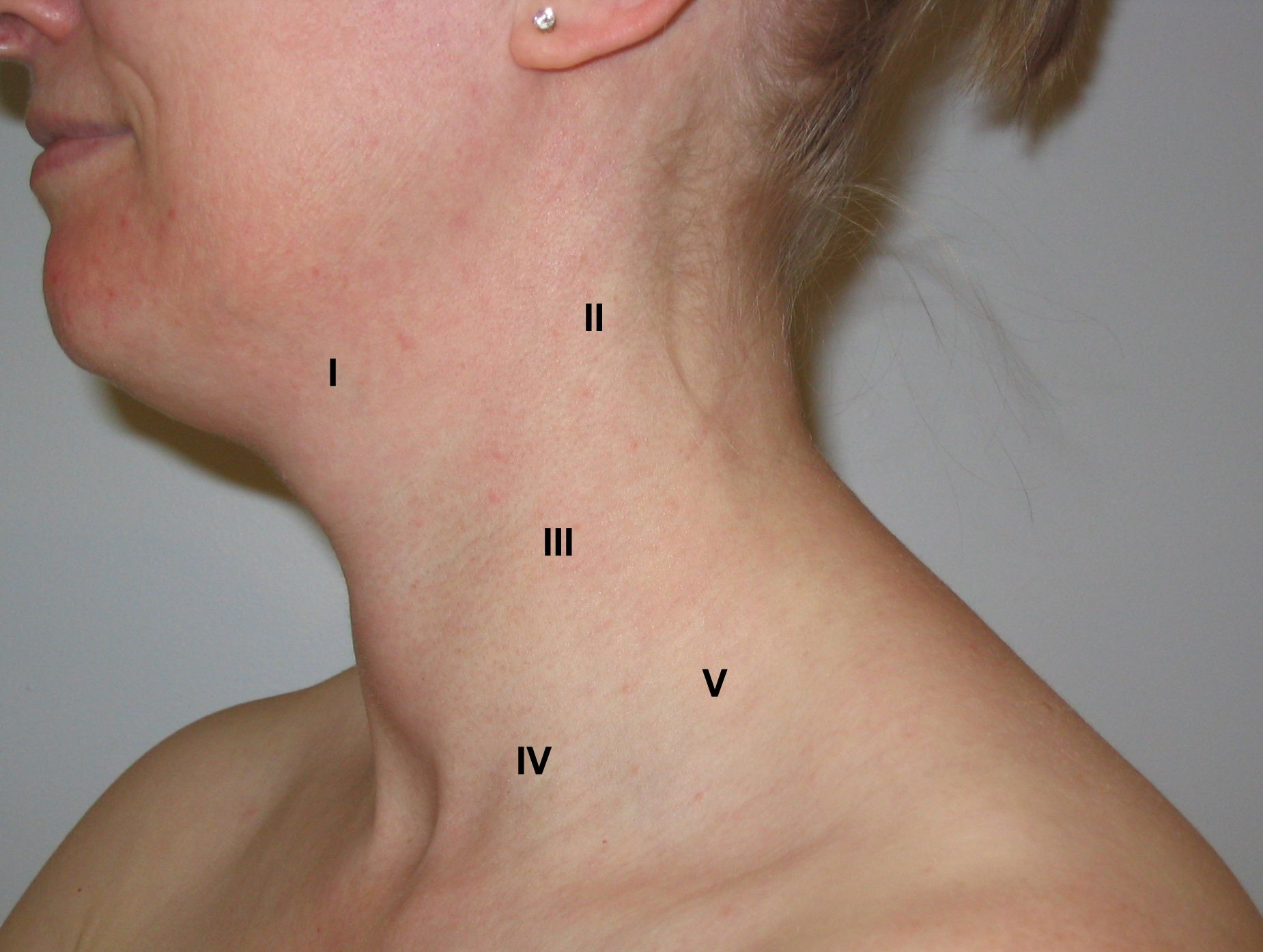 Non-steroidal anti-inflammatory drugs, analgesics help to get rid of pain and inflammation, normalize body temperature. Thermal procedures, compresses with Vishnevsky’s ointment, immunostimulants, vitamins are shown.
Non-steroidal anti-inflammatory drugs, analgesics help to get rid of pain and inflammation, normalize body temperature. Thermal procedures, compresses with Vishnevsky’s ointment, immunostimulants, vitamins are shown.
In case of a purulent form of lymphadenopathy of the axillary lymph nodes, the patient is hospitalized, the purulent focus is opened, followed by drainage and antiseptics. In the presence of indications and tumor forms, surgical removal of enlarged lymph nodes is indicated.
In CMRT clinics, to treat the causes of enlarged lymph nodes in the armpits, conservative therapy and surgical treatment are used:
Consequences
Prevention of swollen lymph nodes under the arms
Article checked
Moskaleva V.V.
Editor • Journalist • Experience 10 years
We publish only verified information
The materials posted on the site are written by authors with medical education and specialists from the CMRT company
More details
Did you like the article?
Subscribe so you don’t miss the next one and get a unique gift from CMDT.
By clicking on the button, I accept the agreement for the processing of my data.
round-the-clock appointment by ph.
+7 (812) 748-59-05
Sign up for CMRT
Do you need a preliminary consultation? Leave your details, we will call you back and answer all
questions
The information on the site is for guidance only, please consult your doctor
Your application has been sent,
our operator will call you back
Callback request
Your name
Telephone
By clicking on the button, I accept the agreement for the processing of my data
Enroll
Your name
Telephone
By clicking on the button, I accept the agreement for the processing of my data
Ask a question to a specialist
Your name
telephone
Your question
Send a reply to e-mail
Publish anonymously
By clicking on the button, I accept the agreement for the processing of my data. Your question
Your question
may be published on the site.
Your application has been sent,
our operator will call you back
Lymphadenopathy (enlarged lymph nodes) – symptoms and treatment
What are lymph nodes
The lymphatic system is a part of the vascular system, similar to a second bloodstream. It consists of capillaries, vessels and ducts through which lymph flows – a transparent viscous liquid with a large number of immune cells.
The lymphatic system is connected with the circulatory system. The task of the lymph is to take excess proteins, salts, water, toxins, cellular debris, pathogens and metabolic products from the tissues, and then send them to the blood for further utilization by the organs of the excretory system.
The lymphatic system includes the lymphatic vessels, the spleen, and the lymph nodes, which are small collections of lymphoid tissue. They filter the lymph and fight pathogens.
The lymphatic system includes the lymphatic vessels, spleen and lymph nodes
Lymph nodes are peripheral and deep.
Peripheral lymph nodes:
- occipital,
- behind the ear,
- front ear,
- chin,
- back neck,
- front neck,
- submandibular,
- supraclavicular,
- jugular,
- axillary,
- cubital (elbow),
- inguinal,
- popliteal.
Peripheral lymph nodes are close to the surface of the skin and can be felt
Deep lymph nodes are located in the chest and abdominal cavities, as well as in the muscle tissue of the thigh.
There are about 500 lymph nodes in the human body.
Lymph nodes are needed to protect the body from the spread of pathogens. Each lymph node plays the role of a “customs” – it passes lymph through itself, but recognizes and retains bacteria, viruses, fungi, toxins, as well as damaged and mutated cells that migrate through the lymphatic vessels from various organs and tissues.
To neutralize pathogens, each lymph node contains clusters of lymphocytes and macrophages – immune cells that quickly destroy harmful atypical cells and microorganisms.
Also in the lymph nodes, the maturation and preparation of lymphocytes for the destruction of foreign proteins and cells occurs.
In the lymph node there are clusters of lymphocytes and macrophages that destroy atypical cells and microorganisms
If there are too many pathogens, the lymph nodes may not be able to cope with the load and increase in size. Physicians call this condition lymphadenopathy .
ICD-10 code for lymphadenopathy – R59 (“Swollen lymph nodes”).
Causes of lymphadenopathy
As a rule, lymphadenopathy is secondary. It does not arise by itself, but as a symptom and consequence of various pathologies.
Causes of lymphadenopathy can be infectious and non-infectious .
When infected, the lymphatic system reacts to the invasion and stimulates the production of protective immune cells – lymphocytes and macrophages, which are needed to destroy foreign microorganisms.:max_bytes(150000):strip_icc()/swollen-glands-and-lymphadenopathy-26343681-5c87d173c9e77c0001422fc6.png) Due to the growth in the number of immune cells, the lymph nodes increase in size.
Due to the growth in the number of immune cells, the lymph nodes increase in size.
Infection of the lymph node can also lead to lymphadenopathy. In this case, the lymph node not only enlarges, but also becomes inflamed – and lymphadenitis develops.
In non-infectious lymphadenopathy, the cause of enlarged lymph nodes may be the growth of tumor cells, as well as autoimmune diseases.
Lymphadenopathy in viral and bacterial infections
Most often, swollen lymph nodes are associated with infectious diseases.
The most common cause of enlargement of peripheral lymph nodes is acute respiratory diseases (ARI) viral and bacterial nature.
For example, lymph nodes often “swell” in acute tonsillitis, also called tonsillitis. Streptococci, staphylococci, pneumococci, adenoviruses, influenza virus and other infectious agents can provoke tonsillitis. Lymphadenopathy caused by acute respiratory infections, as a rule, affects only the posterior cervical or submandibular lymph nodes.
Most often, swollen lymph nodes are associated with infectious diseases.
Posterior cervical lymph nodes are most often enlarged in acute respiratory infections
Deep lymph nodes increase if the infection has penetrated into the internal organs. With intestinal infections, the mesenteric lymph nodes located in the abdominal cavity, next to the intestines, may increase, and with pneumonia, the lymph nodes of the chest cavity and mediastinum.
In some cases, for example, when infected with the Epstein-Barr virus, which leads to the development of infectious mononucleosis, both peripheral and deep lymph nodes, as well as the spleen (it is also part of the lymphatic system), are significantly enlarged.
With HIV infection, generalized lymphadenopathy is observed – almost all lymph nodes are enlarged at once.
Lymph nodes can also increase in size with diphtheria, chickenpox, tuberculosis, hepatitis, toxoplasmosis, venereal diseases and many other infections.
It is impossible to determine which pathogen has entered the body by the enlargement of the lymph nodes. However, the general complaints of the patient, as well as an examination of enlarged lymph nodes, will help the doctor narrow the area of diagnosis, identify the source of infection and make a diagnosis.
Lymphadenopathy in autoimmune diseases
Lymphadenopathy often occurs in association with systemic autoimmune diseases, such as systemic lupus erythematosus, Still’s disease, or rheumatoid arthritis.
In autoimmune disorders, the immune system mistakenly perceives its own cells as pathogenic and begins to destroy them. Lymph nodes and the spleen are actively involved in this process and increase in size due to the heavy load.
Lymphadenopathy in malignant neoplasms
Lymphadenopathy occurs when cancer cells separated from the main tumor enter the lymphatic system and settle in the lymph node.
Accumulating, such cells begin to form metastases – distant secondary foci of a malignant tumor. With the development of a malignant process, the lymph nodes increase in size and become hard. Gradually, they cease to cope with cancer cells and begin to pass them further along the lymphatic system to the next lymph nodes.
With the development of a malignant process, the lymph nodes increase in size and become hard. Gradually, they cease to cope with cancer cells and begin to pass them further along the lymphatic system to the next lymph nodes.
All malignant tumors metastasize to lymph nodes.
In addition, there is a separate type of tumor that initially affects the lymphatic system – they are called lymphomas.
Types of lymphadenopathy
Lymphadenopathy is distinguished by the cause of occurrence, prevalence, duration and nature of the course.
By cause:
- infectious;
- non-infectious.
By involvement of the tumor process:
- tumor;
- non-tumor.
By prevalence:
- localized form – lymph nodes are enlarged only in one part of the body;
- common form – lymph nodes are enlarged in two or more parts of the body.

Duration:
- short – less than 2 months;
- long, or protracted – lasts more than 2 months.
Downstream:
- acute – short-lived, occurred together with any acute pathology;
- chronic – prolonged, persists due to chronic pathology or for no apparent reason;
- recurrent – exacerbates with a certain frequency against the background of a chronic disease or for no apparent reason.
Symptoms of lymphadenopathy
Lymphadenopathy is accompanied by an increase in lymph nodes. In classical lymphadenopathy, the nodes are soft in texture, sometimes slightly painful. In size, the affected lymph node may resemble a bean – it is about 2 cm.
In most cases, patients do not pay attention to enlarged lymph nodes, they are only concerned about the manifestations of the underlying disease. For example, with acute respiratory infections, it can be a sore throat, sore throat, cough, runny nose, fever, chills, a general feeling of malaise.
However, in some cases, an increase in lymph nodes is a symptom of a serious pathology.
An enlarged axillary lymph node in a woman may be a sign of breast cancer.
With the development of lymphoma or the spread of tumor cells (metastasis), the lymph nodes enlarge for no apparent reason and become dense, even hard.
In breast cancer, nearby lymph nodes are enlarged
The patient may not notice enlargement of internal lymph nodes at all. In this case, complaints will primarily indicate the symptoms of the underlying disease, and lymphadenopathy will be detected only after ultrasound, CT or MRI of the corresponding part of the body.
Diagnosis of lymphadenopathy
Most often, patients do not notice lymphadenopathy and do not complain about it. It serves as a secondary symptom of various diseases.
For example, with acute respiratory infections, patients first of all mention sore throat, nasal congestion, cough, chills and other symptoms, but not an increase in the submandibular lymph nodes – the general practitioner will pay attention to this during examination and palpation (palpation).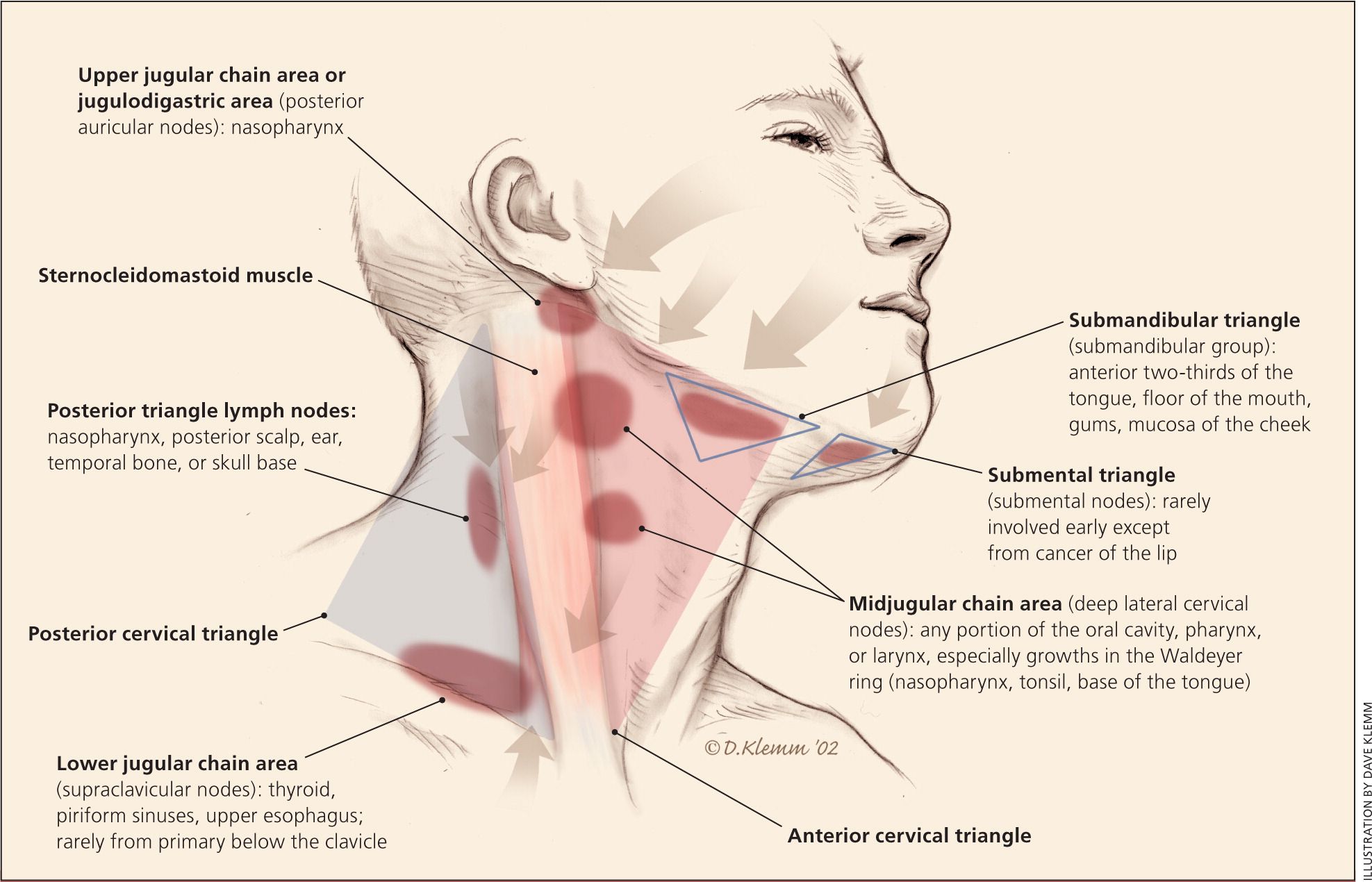
If a patient comes to a therapist complaining of a “cold”, the doctor will first feel the neck and the area under the lower jaw – he will check the lymph nodes.
In intestinal infections, such as salmonellosis, the main symptoms are abdominal pain, vomiting, diarrhea, high fever. An increase in the abdominal lymph nodes, if any, will reveal only a hardware study.
However, in some cases, the appearance of an unusual “bump” under the armpit or in the groin may be the main complaint. In this case, the doctor will ask in detail about the symptoms and, focusing on the location of the enlarged lymph node, will begin to look for the cause of lymphadenopathy.
To assess the general condition of the patient, detect inflammatory processes and narrow the search area for pathology, a specialist can prescribe a general blood test and biochemistry, a urinalysis, and, if necessary, a set of tests for HIV, syphilis and hepatitis.
Clinical blood test with leukocyte formula and ESR (with microscopy of a blood smear in case of pathological changes) (venous blood)
Ven. blood (+140 ₽) 43 1 day
blood (+140 ₽) 43 1 day
43 bonuses
430 ₽
Add to cart
1 day
Ven. blood 140 ₽
Urinalysis
Urine 24 1 day
24 bonuses
240 ₽
Add to cart
1 day
Urine 0 ₽
Biochemistry 21 indicators (extended)
Ven. blood (+140 ₽) 375 1 day
375 bonuses
3,750 ₽
Add to cart
1 day
Ven. blood 140 ₽
Hospital complex
Ven. blood (+140 ₽) 109 1 day
109 bonuses
1,090 ₽
Add to cart
1 day
Ven. blood 140 ₽
If the consistency of the lymph node is not soft, but elastic and hard, the doctor may suggest the development of a lymphoma or metastasis of any tumor. For example, a hard lymph node under the arm of a woman can be a sign of breast cancer.
If a malignant process is suspected, the therapist will refer the patient to an oncologist for an extended examination, including for the appointment of a biopsy – an analysis of the tissues of the lymph node for the presence of pathological changes and cancer cells.
To confirm the diagnosis, the doctor may prescribe a histological examination of the lymph nodes, which will reveal a malignant process, as well as recommend studies for a specific type of cancer.
Histological examination of lymph nodes (1-5 lymph nodes)
Biopsy. material 222 3 days
222 bonuses
2 220 ₽
Add to cart
Biopsy. material 0 ₽
Histological examination of lymph nodes (more than 5 lymph nodes)
255 3 days
255 bonuses
2 550 ₽
Add to cart
CA 15-3 (breast)
Ven. blood (+140 ₽) 64 1 day
64 bonuses
640 ₽
Add to cart
1 day
Ven. blood 140 ₽
Examination of breast punctures
Cytologist. material 61 3 days
61 bonus
610 ₽
Add to cart
Cytologist. material 0 ₽
Histological examination of the breast (biopsy material)
Gist. material 265 3 days
265 bonuses
2 650 ₽
Add to cart
Hist.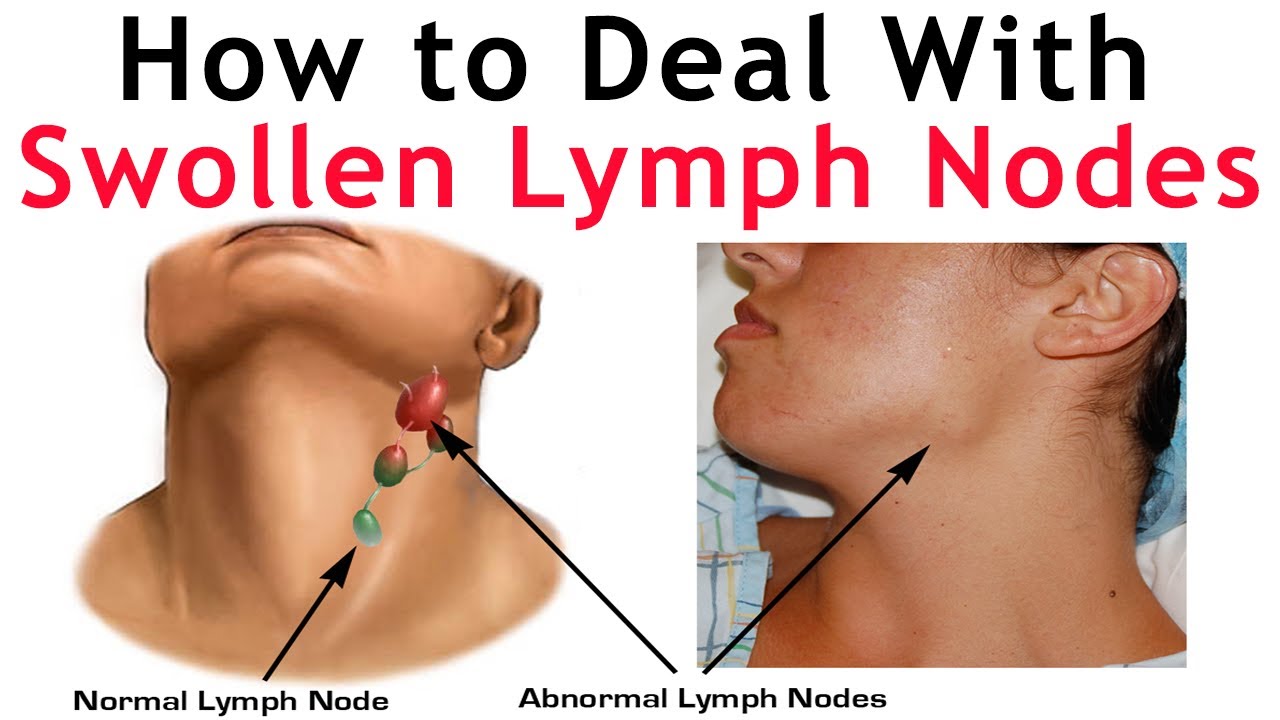 material 0 ₽
material 0 ₽
Treatment of lymphadenopathy
Lymphadenopathy is not considered an independent disease and does not require separate treatment. It occurs as a result of other diseases, and the main goal of therapy is to cure them, and in the case of autoimmune and some oncological diseases, to achieve a stable remission.
For a viral infection, the patient is prescribed antiviral drugs. If the causative agent of the infection is a bacterium, the doctor will give you a prescription for antibiotics.
Treatment of autoimmune diseases may be associated with the use of hormonal drugs and immunosuppressants – drugs that reduce the body’s immune response.
Oncological diseases are treated with the help of operations, chemical and radiation therapy.
If the cause of the enlarged lymph nodes is not established (idiopathic lymphadenopathy) and no diseases were found after the examination, the doctor may recommend a preventive visit every 3 months to observe and evaluate changes. Perhaps the disease proceeds in a latent form and it takes time to manifest itself.
Perhaps the disease proceeds in a latent form and it takes time to manifest itself.
Sequelae of lymphadenopathy
Lymphadenopathy is a clinical sign of many diseases and the body’s signal that something is wrong with health.
In advanced infectious diseases, the pathogen can enter the lymph node and lead to its inflammation – lymphadenitis . Pathology is manifested by severe pain in the lymph node, swelling, redness of the skin, and sometimes suppuration or tissue death (necrosis).
Tuberculous lymphadenitis.
Photo: Dr. J. S. Bhandari
Lymphadenitis can lead to blood poisoning – sepsis, as well as to the spread of infection throughout the body.
Moreover, an increase in lymph nodes can be oncogenic in nature – it can be a sign of the spread of secondary foci of a cancerous tumor. For example, lymph nodes increase with the development of a malignant neoplasm – lymphoma, as well as with the spread of cancer cells of other tumors (metastases) through the lymphatic system.

